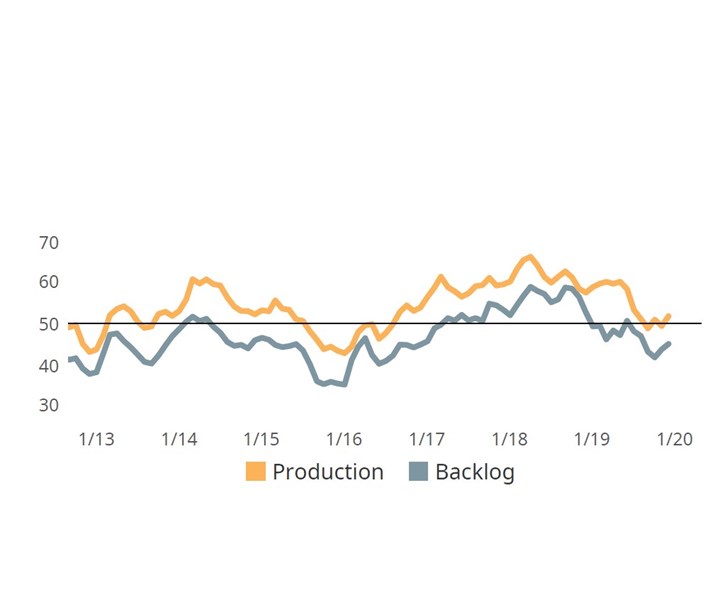Composites Index ends year on production boost
The Composites Index closed 2019 with a December reading of 49.2.

The Composites Index closed 2019 with a December reading of 49.2. Readings during the second half of 2019 averaged 48.5, representing a mild contraction in the industry’s activity level. Index readings above 50 indicate expanding activity, while values below 50 indicate contracting activity. The further away a reading is from 50, the greater the change in activity. review of the December data found that the Index was supported by an expansionary, six-month high reading for production. This boost to the Index was offset by a sharp contraction in backlog activity. Employment, supplier deliveries, new orders and exports all reported mildly contractions activity levels, thus having little impact on the Index, which is calculated as an unweighted average of these six components.

Early in the second half of 2019, the composites industry experienced contracting business activity in both production and new orders. That contraction gave way to a new steady-state in the fourth quarter as readings oscillated around a reading of ‘50,’ which represents no change in month-to-month business activity levels. At the end of the year, certain business index components continued to report eroding activity levels including backlogs and exports. Supplier deliveries, which had played an important role in supporting the Index through the first three quarters of 2019, began reporting contracting conditions in the fourth quarter.
More information about the Composites Fabricating Index can be found at
Related Content
-
Hybrid composite architecture enables rigid wind propulsion solution for maritime decarbonization
GT Wings’ AirWing leverages aerospace engineering principles combined with hybrid glass and carbon fiber composite construction to deliver up to 30% fuel savings through compact, deck-compatible wind propulsion.
-
Revisiting the OceanGate Titan disaster
A year has passed since the tragic loss of the Titan submersible that claimed the lives of five people. What lessons have been learned from the disaster?
-
Al Seer Marine, Abu Dhabi Maritime unveil world’s largest 3D-printed boat
Holding the new Guinness World Record at 11.98 meters, the 3D-printed composite water taxi used a CEAD Flexbot to print two hulls in less than 12 days.
.jpg;width=70;height=70;mode=crop)


